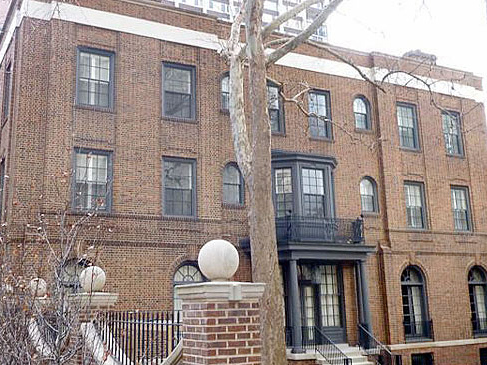Fort Dearborn to Astor Street

This Georgian/Federal Revival-style house at 1416 Astor Street, one-time seat of the Bowen-Blair family, is among the city’s outstanding properties.
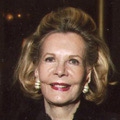
By Megan McKinney
The Blair clan is so significant among Chicago’s distinguished dynasties, it is interwoven or otherwise connected with countless others among the city’s historic families, including Borland, Bowen, de Koven, Keep, McCormick and Mitchell. Therefore, this will be a long Classic Chicago Dynasties series, with segments through which we will weave back and forth in studies of other important lines and their Blair relationships. With such complexity, it is difficult to know where to start; however, we have chosen to begin with the Bowens.
This portion of the winding story opens in 1835—two years before Chicago’s incorporation as a city—with what was to be a brief visit to the village by a government courier, Edward H. Hadduck.
A reliable authority on these beginnings is Hadduck’s granddaughter, Louise de Koven Bowen, who wrote in her 1926 book Growing Up with a City:
“He was in charge of $200,000, which he brought in a prairie schooner wagon from Detroit to Chicago. This money was to be used to pay the Indians for certain obligations which the government had incurred. When my grandfather reached Chicago, he saw so many possibilities for a young man that he immediately returned to Ohio, married my grandmother and brought her to Chicago.”
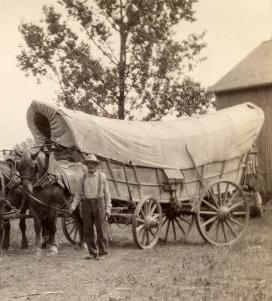
When Edward Hadduck returned to Chicago with his bride by his side in similar transport, the young woman sat with a loaded rifle across her knees, and, upon arrival, the young Hadducks “were obliged to take refuge” in Fort Dearborn. It was still rough territory in which the new Mrs. Hadduck to get water “had to sneak out of the Fort down to the river, to avoid the Indians of whom she was very much afraid.”
It was there, within the palisades, that Louise’s mother, Helen Hadduck, was born, the “third white child” in the new village. She would marry banker John de Koven, and, in 1859, give birth to their only child, Louise.
De Koven Street, infamous as site of the beginning of the Great Chicago Fire of 1871, was named for Louise’s father, who listed the Northern Trust Co. and the Continental Illinois National Bank and Trust Co. among his banking associations.

Five-year-old Louise de Koven in 1864.
Many of Louise’s earliest memories of Chicago involved her Hadduck grandfather and the Monroe Street house, where he and her grandmother lived while she was a very young child. When they moved there from Lake Street and Michigan Avenue, “the neighbors all regretted that (they) were to live so far out of town.”
She remembered a red brick house at the corner of Monroe and Wabash, set back from the two streets surrounded by a lawn interspersed with leafy trees. A neighbor across Monroe Street nurtured a fruit garden where Louise delighted in sampling gooseberries, and her family was one of many that kept a cow. Every day, the hired man led the animal to an empty lot at Wabash and Adams, where it grazed with neighbors’ cows until evening, when it was escorted home to be milked.
Edward Hadduck, although owner of a mill where he worked every day, was an astute investor in Chicago properties, as were so many of his contemporaries. It would seem difficult not to become rich from property investment in mid-19th century Chicago; however, the large fortune Edward Hadduck amassed by buying up sizable chunks of what would become the heart of downtown Chicago was exceptional and resulted in a substantial inheritance for his beloved granddaughter and only heir. As an adult, she would become—with Edith Rockefeller McCormick and Ruth Hanna McCormick—one of the three richest women in Chicago.
Louise was still a child when Hadduck sold one excellent property, the corner of Washington Street and Wabash Avenue (visualize the future site of a section of the Marshall Field building) and divided the profit between Louise and her mother. “This was the first money I ever had,” she recalled, “and it gave me an annual income which I was allowed to spend as I chose.”
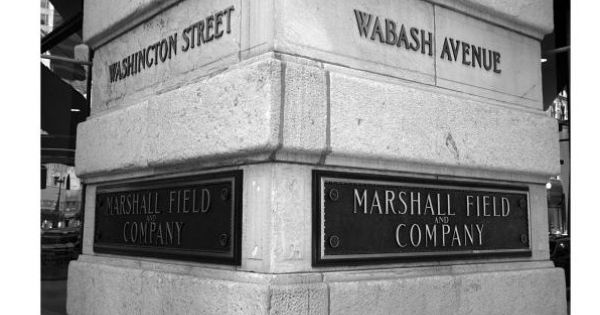
One of Louise’s childhood playmates was Tad Lincoln, the President’s son. When the Lincolns were in Chicago, as often they were, the little family stayed at Clifton House, steps from Louise’s grandfather’s house, and the children regularly visited back and forth. Louise recalled that when she was in the Lincoln Suite at the hotel, Mr. Lincoln would frequently come into the room and speak pleasantly to her.
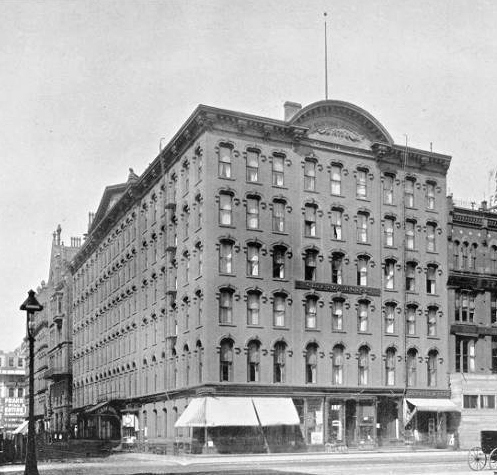
A later view of Clifton House, the hotel at Madison Street and Wabash Avenue, where the widowed Mrs. Lincoln would live.
After the assassination, Louise’s father took her to the Courthouse, where the President’s body lay in state, and held her on his shoulders as they passed the casket so she was able to look down at the President’s sunken face.

The long line of mourners entering the Courthouse to view Lincoln’s body.
She went on to become an 1875 honors graduate of Dearborn Seminary, the prominent school for girls in Chicago, and, in 1886, she married Joseph Tilton Bowen, a banker and local manufacturer, originally from Providence, Rhode Island. Among the four children they would have was Helen Hadduck Bowen, born in 1890, who became the Bowen connection with the Blairs when she married William McCormick Blair.
There were three other children within a six-year period, John de Koven Bowen in 1887; Joseph T. Bowen Jr. in 1889; and, in 1892, Louise de Koven Bowen, who would marry Mason Elliott Phelps. Joseph Jr. went into real estate, married Gwendolyn High and settled with her in Lake Forest; they were parents of a daughter, Gwendolyn.

Louise Bowen as a young matron.
Although the Bowens lived well, were one of Chicago’s most fashionable couples and Louise appreciated style, she had a social consciousness of immense proportions. During her long career as a social and municipal reformer, advocate for women and children, and woman’s suffrage activist, she fought tenaciously for the rights of those less privileged and the underserved. She was a stockholder of consequence in a spectrum of companies and able to influence working conditions in such companies as Pullman, Sears Roebuck and U.S. Steel. Throughout her life, she used her fortune well, in time becoming such a commanding figure that there was even discussion of running her for mayor.
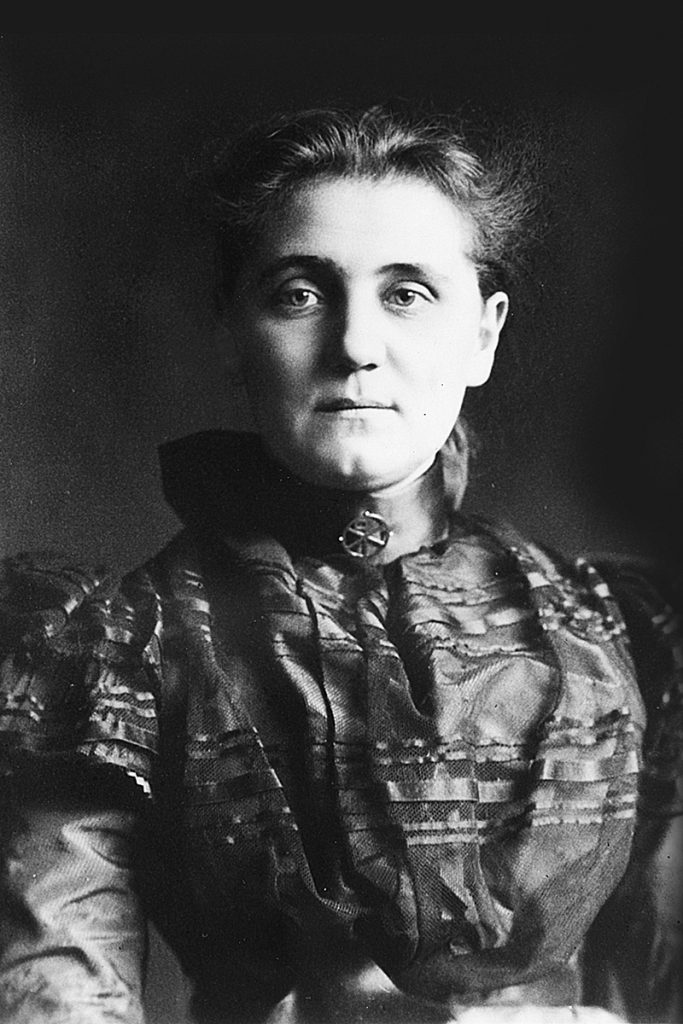
Hull House founder Jane Addams at 35 in 1895.
The list of Louise’s hands-on accomplishments is dizzying, much too long to itemize here. However, it is important to note that she was a major supporter of Hull House and a longtime close friend of Jane Addams.

Louise surrounded by children at the Bowen Country Club.
She founded the Bowen Country Club in 1912 as a memorial to her husband. This was a haven in Waukegan, where underprivileged children could experience a healthy environment. Today it is Bowen Park.
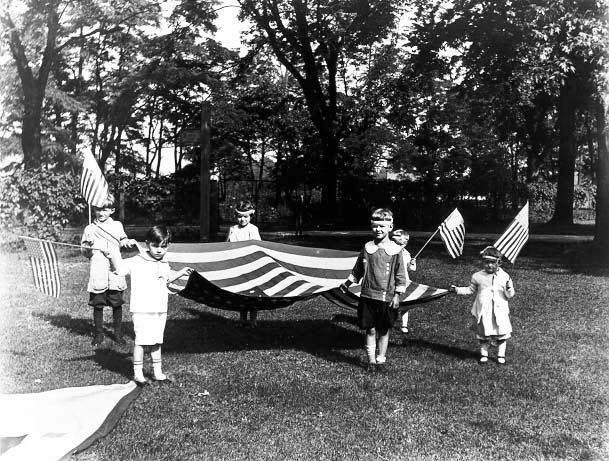
Celebrating the Fourth of July at Bowen Country Club.
Megan McKinney’s Classic Chicago Dynasties series on The Blairs will continue next week with Bowens Pioneering Astor Street.
Author Photo:
Robert F. Carl



